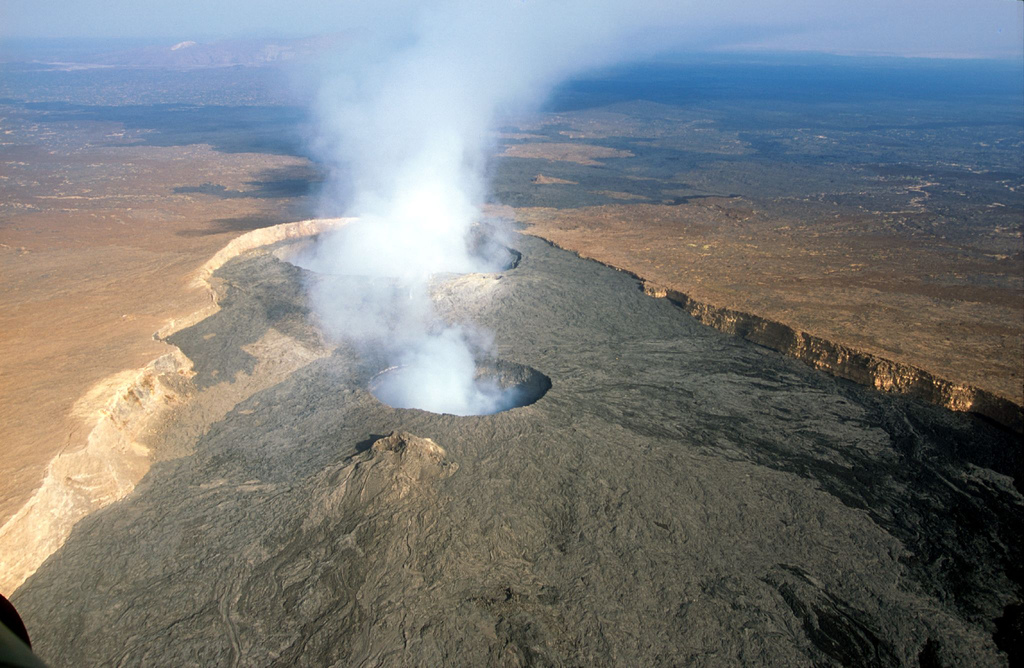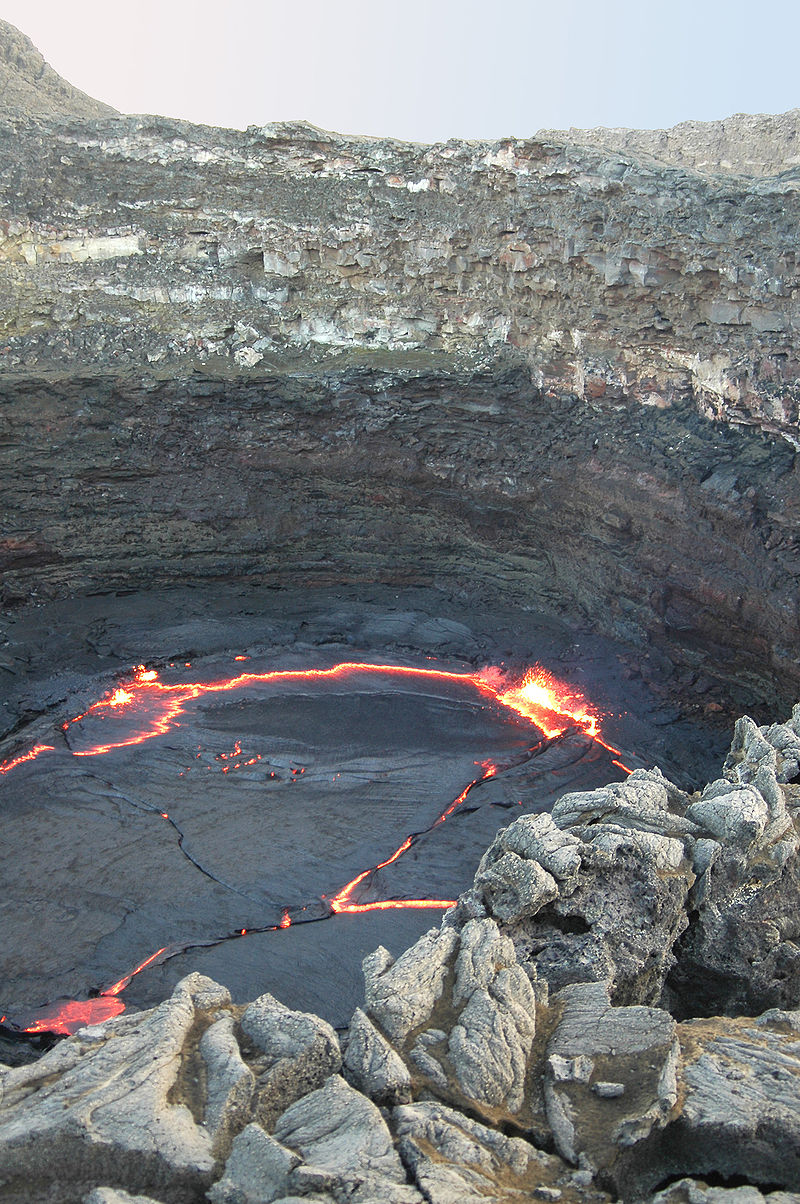Erta Ale (or Ertale or Irta'ale) is a continuously active basaltic shield volcano in the Afar Region of northeastern Ethiopia. It is situated in the Afar Depression, a badland desert area spanning the border with Eritrea. Erta Ale is the most active volcano in Ethiopia.
Erta Ale is 613 metres (2,011 ft) high, with one or sometimes two active lava lakes at the summit which occasionally overflow on the south side of the volcano. It is notable for holding the longest-existing lava lake, present since the early years of the twentieth century (1906). Volcanoes with lava lakes are very rare: there are only six in the world.
Erta Ale means "smoking mountain" in the local Afar language and its southernmost pit is known locally as "the gateway to Hell". In 2009, it was mapped by a team from the BBC using three-dimensional laser techniques, in order for the mapping team to maintain a distance and avoid the lakes' searingly hot temperatures.
Erta Ale
Erta Ale is centered over the East African Rift system, which is a triple junction setting whose movements are resulting in the formation of a pull-apart basin or rift. The volcano comprises mainly Mafic material which has been brought up to the surface caused by unroofing of the mantle due to this rift formation.[citation needed]
Not much is known about Erta Ale, as the surrounding terrain is some of the most inhospitable on Earth and the native Afar people have a legendary reputation for viciousness towards outsiders; one travel guide recommends hiring "one or maybe two armed guards or police" to visit Erta Ale. However, they welcomed and helped a team from BBC. On January 16, 2012, a group of German, Austrian and Hungarian scientists/tourists was attacked at Erta Ale. Five scientists/tourists were killed, some taken as hostages and others wounded. The Afar Revolutionary Democratic Unity Front (ARDUF) claimed responsibility for the attack[8] and released the two kidnapped tourists in March 2012.











